Walking is a core-engaging exercise that continuously challenges the core to stabilize the body and maintain balance with each step. This dynamic motion offers more functionality than isolated exercises. Core strengthening also improves posture and reduces lower back pain, enhancing long-term health while increasing calorie burn.
For those with joint issues or beginners, walking is a gentle exercise that mobilizes the body without overstraining other body parts. This exercise also naturally engages the core with each stride, improving stability, balance, coordination, and providing a foundation for fitness and daily activities.
Some Walking Exercises for the Core
1. Knee-Lift Walk
The knee-lift walk helps stabilize the upper body during the workout, targeting the rectus abdominis, internal and external obliques, resulting in a reduction of belly fat and a firmer midsection.
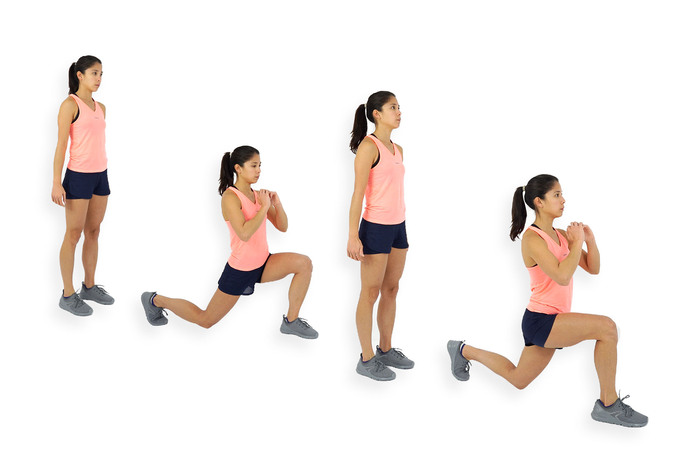
Knee-lift walks help reduce belly fat and firm up the abdominal muscles.
Instructions:
– Stand tall with feet hip-width apart and hands by your sides.
– Step forward with your right foot, bending the knee to form a 90-degree angle, while slightly lowering the left knee toward the ground.
– Push through both feet to stand, squeezing your core, and step forward with your left foot, repeating the motion.
– Perform 10-12 knee lifts after every 2 minutes of walking.
Beginners can take shorter strides or try reverse lunges to improve balance. Another variation is to bring the feet together in a neutral position before taking the next step. Avoid taking too-short or too-long steps to prevent pressure on the knees, hips, or lower back. Keep the upper body tight to maintain stability without leaning too far forward or backward.
2. High-Knee Walk
High-knee walks help tone the abdominal muscles by targeting the upper and lower rectus abdominis and the internal and external obliques. This exercise also improves endurance and balance.
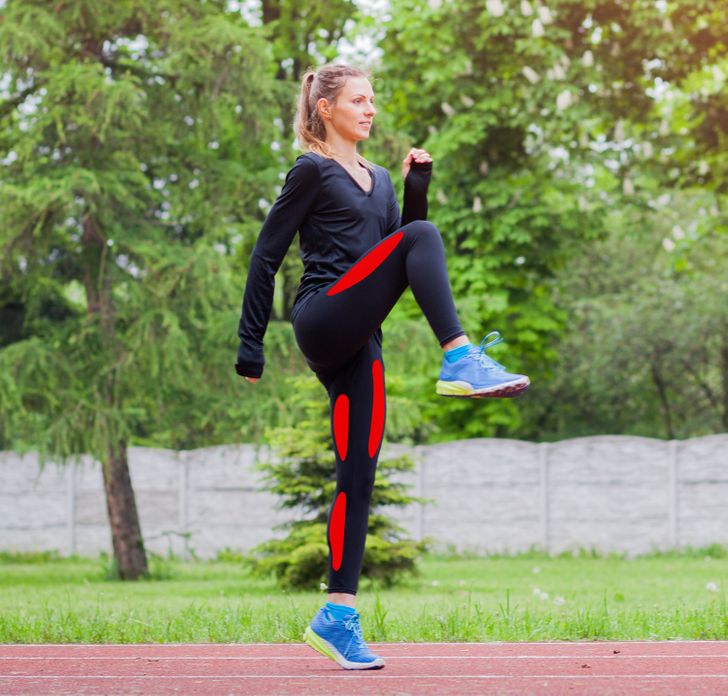
High-knee walks help strengthen the core, improve endurance, and enhance balance.
Instructions:
– Stand tall with feet hip-width apart.
– Engage your core, lift your right knee to chest height, and step forward, lowering the right knee while lifting the left knee, and continue walking.
– Do this for 30 seconds after every 10 minutes of walking.
Beginners should start by lifting their knees in place before proceeding to walk. Avoid leaning backward or forward, as this will create imbalance and instability.
3. Side-Step Walk
The side-step walk primarily targets the internal and external obliques while also working the rectus abdominis, transversus abdominis, hip flexors, and lower back muscles.
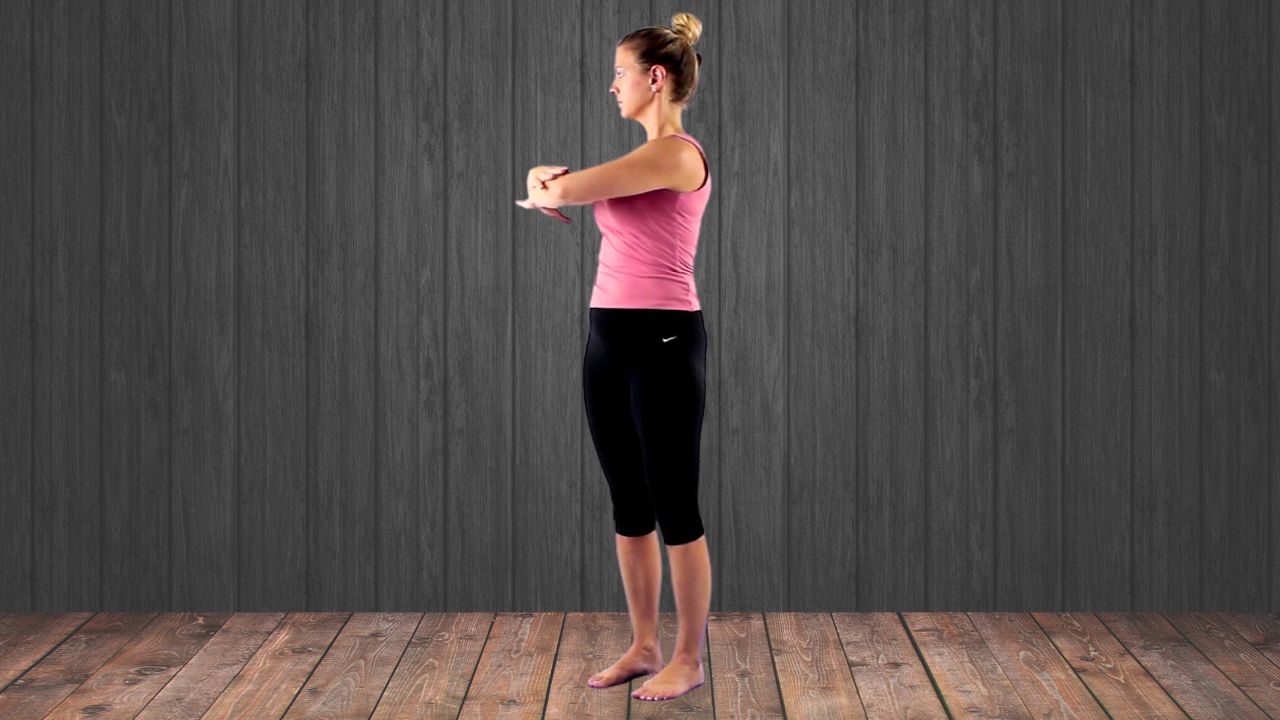
Side-step walks focus on the internal and external oblique muscles.
Instructions:
– Stand tall with feet hip-width apart, interlacing your fingers and placing them behind your head or across your chest.
– Engage your core, take a wide step to the right with your right foot, and twist your torso to the right, repeating on the left side with each step.
– Do side steps for 1 to 2 minutes after every 10 minutes of walking.
Beginners should focus on the twisting motion rather than the walking motion at first. You can do this by taking one step, pausing to twist, and then continuing to walk. Avoid arching your back during this exercise, and control the movement instead of using momentum to reduce the risk of injury.
4. Overhead Press Walk
The overhead press walk targets the transversus abdominis, rectus abdominis, internal and external obliques, and spinal stabilizers.
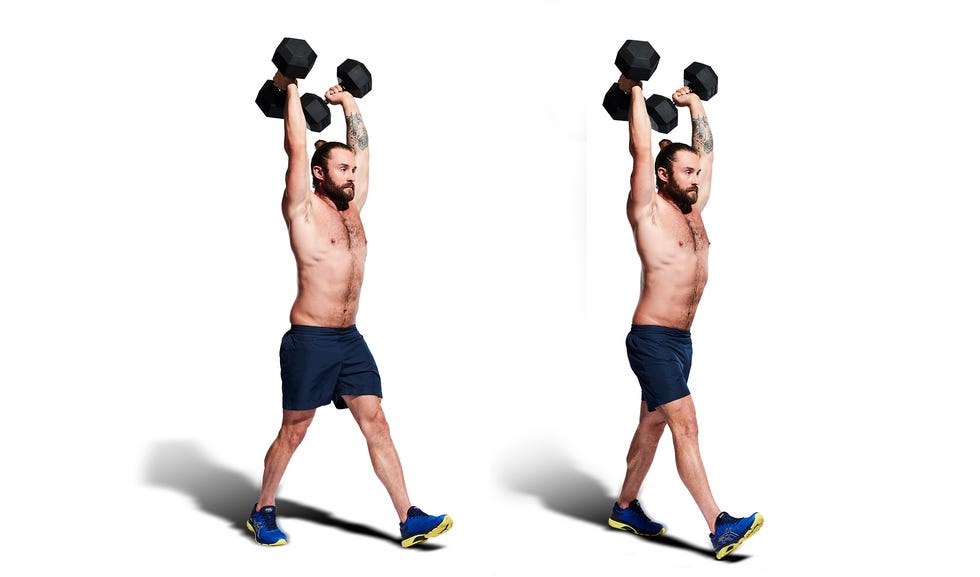
The overhead press walk targets the transversus abdominis, rectus abdominis, and oblique muscles.
Instructions:
– Stand tall with feet hip-width apart, holding dumbbells with arms by your sides, engaging your core, and relaxing your shoulders.
– Lift the dumbbells overhead, stepping forward, focusing on maintaining your balance; challenge yourself by holding the weights overhead or adding an overhead press.
– Do this for 30 to 60 seconds after every 3 to 5 minutes of walking.
Beginners can forgo the weights to focus on their form before increasing the challenge. Always maintain a straight back and avoid placing pressure on your spine.
5. Heel Walk
The heel walk targets the transversus abdominis, rectus abdominis, and oblique muscles.
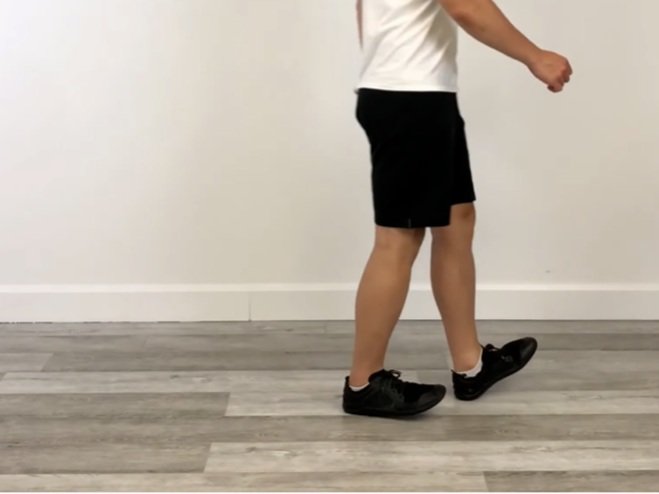
Heel walks focus on the transversus abdominis, rectus abdominis, and oblique muscles.
Instructions:
– Stand tall with feet hip-width apart, lifting your toes off the ground, and balancing on your heels.
– Engage your core and begin walking forward on your heels, taking small, controlled steps; spread your arms out to your sides for balance if needed.
– Perform heel walks for 10 to 20 steps after every 3 to 5 minutes of walking.
Beginners can practice indoors near a wall or railing for support, taking shorter distances and increasing the distance over time. Keep your body aligned with your hips, and point your toes upward.
6. Ankle Tap Walk
The ankle tap walk specifically targets the lower rectus abdominis, hip flexors, internal and external obliques, and transversus abdominis.
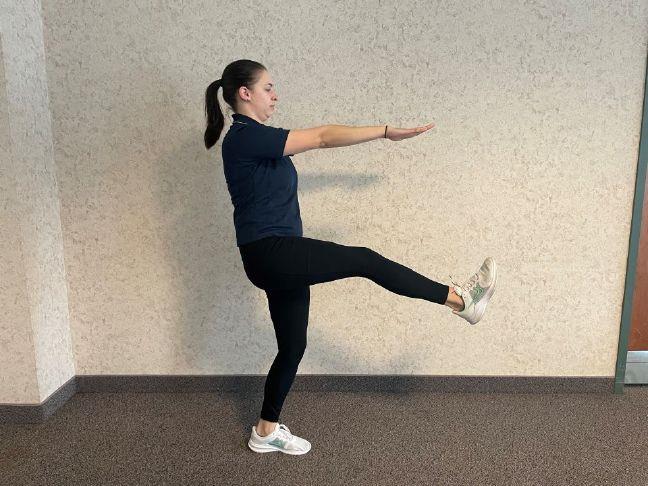
The ankle tap walk targets the lower abdominal muscles, hip flexors, and oblique muscles.
Instructions:
– Stand tall with arms extended in front of you at shoulder height.
– Engage your core, lift your right knee, and try to touch your right toes to your left hand.
– Lower your leg and step forward, repeating the motion with the opposite leg and arm.
– Perform 10 to 16 ankle taps after every 3 to 5 minutes of walking.
Beginners can tap their ankles at a lower height and slower pace, and slightly bend their knees if experiencing calf strain. Keep your back straight when tapping your ankles.
How to Structure a Walking Workout for Your Core
According to Dr. Nguyen Trong Thuy, to effectively build core strength through walking, you should:
– Aim for 30 to 45 minutes of brisk walking; start with a goal of 2 to 3 sessions per week and gradually increase to 3 to 6 sessions per week.
– To enhance progress, increase speed, wear a weighted vest, use dumbbells, or walk on an incline or stairs.
– Perform these exercises at a moderate to brisk pace to elevate your heart rate and stimulate your muscles.
– Try to maintain a speed of approximately 5.8 to 7.4 km/h.
– Begin on flat terrain and progress to gentle inclines to further challenge your core.
– Consistency is key to faster results. Typically, after two to three weeks, you’ll notice significant improvements, such as a firmer midsection and reduced lower back strain.
How Many Kilometers Should You Walk Each Day for Optimal Health?




































